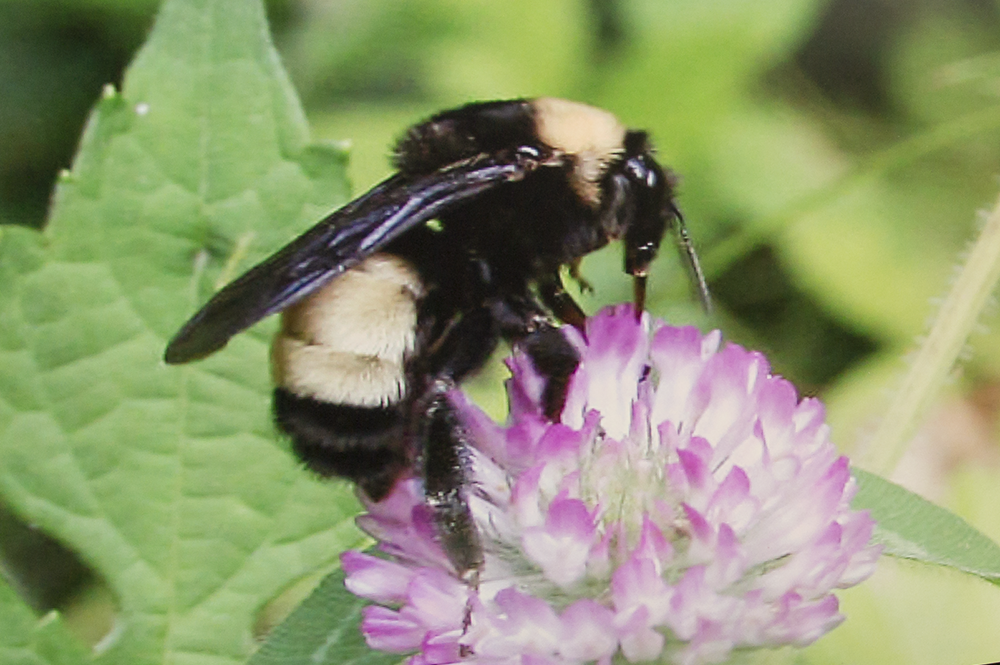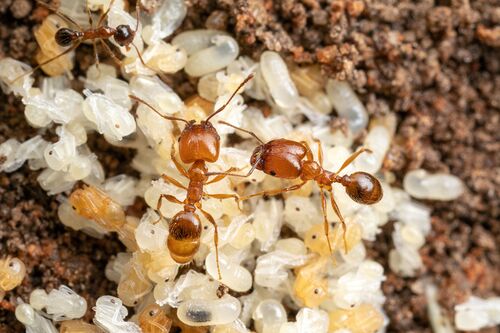What is killing the bees?

The United States Department of Agriculture recently granted two University researchers $475,000 each to help figure out why the number of insect pollinators continues to drop.
For the next three years, May Berenbaum, professor and head of the Department of Entomology, will use the grant to focus on the honey bee and how floral diversity affects their health. Meanwhile, Sydney Cameron, professor of entomology, will narrow down what might be killing off the bumble bees.
Finding answers in the honey
Beekeepers have been losing 30 percent of their colonies on an annual basis since 2007 — and poor nutrition could be to blame, according to Berenbaum.
Because human activity has homogenized much of the North American landscape, bees lack diverse sources of pollen and nectar. In the Midwest, the landscape mainly consists of soybeans and other crops. However, this limited diversity of flowering plants may not be sufficient to secure honey bee health.
“The landscape is so human-dominated that there’s only a major crop of soybean flowers at certain times of year,” Berenbaum said. “Much of our local landscape is dominated by corn for much of the summer, but corn isn’t really a resource for bees because it doesn’t produce nectar and the pollen is optimized for wind dispersal, not suitability for pollinators. It’s been found that pollen diversity is really important for bee health. Pollen is the main protein source for bees, so consuming different types of proteins helps them fight off diseases and live longer.”

Another key aspect to bee health is nectar diversity. In the process of consuming nectar, which bees later turn into honey, they also consume phytochemicals, which originate from the plant. Plants make phytochemicals both to attract pollinators and to fend off pests and pathogens—and the diversity of phytochemicals in nectar possibly offers clues to the reason behind declining bee populations.
“Declining plant diversity means that nectar phytochemical diversity declines as well. Each species of plant makes its own distinctive array of phytochemicals and these phytochemicals can have a tremendous impact on bees. We’ve already shown that at least two phytochemicals that are commonly found in honey that arise from nectar increase the activity of the detoxification enzymes,” Berenbaum said. “So bees are better able to withstand pesticides if certain phytochemicals are in their diet. Also, these phytochemicals turn on some of their immunity genes.”
Berenbaum will work to answer questions involving phytochemicals, such as which phytochemicals from which plant species are effective at helping bees fight disease, resist pesticides, and reproduce.
“Nurse bees—bees that take care of the grubs when they’re sick with a fungus called Nosema—will preferentially feed on the honey made from the nectar of a specific plant species that has the greatest antifungal activity. Bees can prescribe their own medicine,” Berenbaum said. “We want to explore that ability and see whether they can pick among honeys when they encounter other forms of stress such as pesticides or other disease-causing organisms. We want to see what’s in honey, what bee genes get turned on, and what effects different honey types have on health and longevity.”
With honey bees pollinating 90 different crops in the United States, which contributes to $19 billion of agricultural value annually, there’s a lot riding on the state of the honey bees.
“Honey is an amazing, multidimensional substance and there’s nothing else like it,” Berenbaum said. “Honey is part of what makes a honey bee a honey bee. For happier honey bees, we need healthier honey.”
A closer look at fungus and pesticides

The honeybees aren’t the only species of bee declining. Some wild bumble bee species are also suffering severe range losses. Sydney Cameron will use her latest grant to build on previous research regarding this problem.
Previously, Cameron discovered a strong correlation between the decline of bumble bee populations and the fungal pathogen Nosema bombi. She showed that the prevalence of Nosema bombi increased significantly in declining bumble bee populations approximately 20 years ago, which coincides with the advent of large-scale domestication of bumble bees in North America.
“Those declining populations are correlated with high prevalence of the pathogen, Nosema,” Cameron said. “We found the presence of this pathogen is correlated with the beginning of the domestication industry.”
Cameron will study the bumble bees to see how the pathogen affects them, using experiments to examine mortality rates in infected and uninfected bees. Her team will also use next-generation sequencing to learn which genes might be important in susceptibility and resistance to the pathogen. This information will be compared among different bumble bee species, some of whose populations remain stable and thriving.
“Certain ones are more sensitive,” Cameron said. “We’re targeting a subgenus of close relatives that have been particularly affected by the decline and also those that are doing well so we can see what the differences are.”
Additionally, Cameron will focus in on a pesticide, called imidacloprid, which came into major use about 20 years ago in the U.S. — also about the same time that the bumble bee domestication industry began.
“We would also like to look at the affects of that pesticide on targeted bumble bee species and also look at interactive effects of Nosema and pesticides. We want to look at genomes to know if there are any genes related to susceptibility or resistance to the pesticides, which can cause additional stress, thereby weakening the bees and increasing their susceptibility to the pathogen,” Cameron said.
She emphasized that bumble bees are among the most important pollinators of wild and agricultural plants worldwide, but they are declining globally across North and South America, China, and Europe.
“Bumble bees are extraordinary bees because they’re found in the Himalayas and they’re found in Alaska. They can fly in very cold and high elevation conditions. They can fly when it’s snowing—they thermoregulate, shiver to warm themselves up,” Cameron said. “They’re also found all over the world and they’ve somehow managed to populate diverse areas, from the high Himalayan foothills to the rainforests of South America. They’re fascinating in their adaptability and their pervasiveness.”
One factor on Cameron’s side is better DNA sequencing technology and more knowledge of bee genomes. With the assistance of better genome sequencing methods, which enables researchers to understand environmental stressors affecting bee populations, researchers are closer than ever to understanding and solving the global problem of bee decline.
“If I had tried to do this research 10 years ago, it would not have been possible,” Cameron said.








